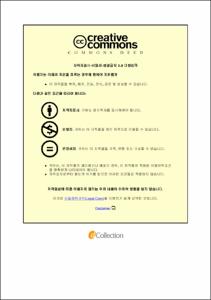생쥐의 간 허혈-재관류 손상에서 Phosphoinositide 3-Kinase p110γ의 역할
- Abstract
- 배경: 조직 허혈 - 재관류 손상은 일반적으로 장기 또는 조직으로의 혈액 공급이 중단되고 재관류에 의한 혈액 순환을 재개할 때 발생하며, 급성 염증 반응이 유발된다. 따라서 허혈 - 재관류 손상 모델은 일반적으로 절제 수술 및 이식에 의한 급성 염증 반응의 비임상 모델로 사용된다. 이전의 연구에서 PI3K p110 감마의 약리적 억제가 신장 허혈 - 재관류 손상을 줄일 수 있음을 보여주었다. 따라서 이 연구는 간 허혈 - 재관류 손상에서 PI3K 감마의 역할에 대해 알기 위해 PI3K p110 감마 결핍 생쥐를 사용하여 실험을 진행하였다.
방법: 간문맥을 혈관 클램프로 집어 허혈 상태를 90분간 유지하고 혈관 클램프를 제거하여 재관류를 시작함으로써 간 상부 70% 정도 부위에 허혈 – 재관류 손상을 유도하였다. 재관류 3또는 24 시간후 생쥐를 희생시켰다. 간 손상은 혈청 ALT 수준과 조직학에 의해 평가하였다. 염증성 사이토카인 발현 수준은 qPCR에 의해 결정되었고, 각 사이토카인의 단백질 수준의 검출은 세포 내 염색을 수행하고 유세포 분석에 의해 분석하였다. 또한, 간 면역 세포 아군은 유세포분석에 의해 결정되었다.
결과: PI3K p110 감마 결핍 생쥐에서 간 허혈 – 재관류 손상이 감소하는 것을 혈청 ALT 수준과 조직병리학을 통해 확인하였다. PI3K p110 감마 결핍 생쥐의 간에서 야생형 생쥐와 다르게 염증 사이토카인 IL-6, IL-17의 발현이 수술 후 3, 24 시간 후에 감소하는 것을 qPCR을 통해 발견하였다. 특히 허혈 3시간 후 IL-6와 IL-17유전자 발현의 감소는 통계적으로 유의했다. 이러한 사이토카인을 생성하는 세포 종류를 규명하고 유전자 발현 양 감소를 단백질 수준에서 평가하기 위하여 세포내 염색을 통한 유세포분석을 실시한 결과, IL-6를 발현하는 세포는 CD11b+ 대식세포이고 IL-17을 발현하는 세포는 T세포임을 알게되었다. 또한 PI3K p110 감마 결핍 생쥐의 간 면역세포 구성 중 전체 대식세포의 비율이 허혈 - 재관류 손상 이후 감소하였고, 특히 CD11b+ F4/80+ 한 손상된 조직으로 침윤된 대식세포의 비율이 유의하게 줄어들었다. 하지만 대식세포 M1과 M2 분화에는 차이가 없었다.
결론: 이 실험결과들을 바탕으로 PI3K p110 감마가 생쥐에서 간 허혈 – 재관류 손상을 완화시키는 역할을 한다는 것을 확인할 수 있었고, 실험 결과를 종합하면 PI3K p110 감마 결핍은 염증성 사이토카인 발현의 감소와 간에서의 전체 대식세포의 비율을 감소시키고, 특히 염증성 조직으로 침윤된 대식세포의 비율을 감소시킴으로써 간 허혈 – 재관류 손상을 감소시키는 것으로 보인다.
|Background: Tissue ischemia-reperfusion injury (IRI) generally occurs when blood supply to an organ or tissue is abruptly interrupted and blood circulation is resumed subsequently, that leads to an acute inflammatory response. Ischemia-reperfusion injury models are often used for the research on the complications of resectional surgery and transplantation. Our previously study shows that the treatment of PI3K p110γ-specific inhibitor can reduce kidney ischemia-reperfusion injury. Therefore, this study was set up to understand the role of PI3K p110γ in liver ischemia-reperfusion injury using PI3K p110γ-deficient (p110γ-/-) mice.
Methods: Hepatic warm ischemia was performed for 90 minutes by clamping the portal triad and reperfusion was initiated by removal of the clamp. After 3 or 24 hours of reperfusion, the mice were sacrificed. Liver damage was evaluated by serum alanine aminotransferase (ALT) level and tissue histology. The expression of pro-inflammatory cytokines was determined by qPCR as well as by intracellular staining for flow cytometry. Immune cell populations in the liver were determined by flow cytometry.
Results: I found that hepatic IRI was ameliorated in PI3K p110γ-/- mice by serum ALT levels and histopathological analysis. The livers form PI3K p110γ-/- mice had less transcripts of pro-inflammatory cytokines such as interleukin (IL)-6 and IL-17 than those of heterozygous control mice at 3 and 24 hours post-ischemia. The reduction of IL-6 and IL-17 transcripts at 3 hours was statistically significant. The results of flow cytometry show that IL-6 was produced mainly in CD11b+ monocytes/macrophages in the insulted liver. In addition, total macrophages in the liver of p110γ-/- mice were reduced after 3 hours of reperfusion. Particularly, CD11b+F4/80+ infiltrated macrophages were significantly decreased in the livers from p110γ-/- mice. Nonetheless, The ratio of M1/M2 subsets was not changed.
Conclusion: I found that the genetic deficiency of PI3K p110γ alleviated hepatic IRI in mice. These results suggest that PI3K p110γ-/- mice have decreased expression of inflammatory cytokines in the liver upon LIRI, as a result of the reduced trafficking of macrophages.
- Issued Date
- 2018
- Awarded Date
- 2019-02
- Type
- Dissertation
- Alternative Author(s)
- Kim Minkyung
- Affiliation
- 울산대학교
- Department
- 일반대학원 의학과
- Degree
- Master
- Publisher
- 울산대학교 일반대학원 의학과
- Language
- eng
- Rights
- 울산대학교 논문은 저작권에 의해 보호받습니다.
- Appears in Collections:
- Medicine > 1. Theses (Master)
- 파일 목록
-
-
Download
 200000173112.pdf
기타 데이터 / 3.98 MB / Adobe PDF
200000173112.pdf
기타 데이터 / 3.98 MB / Adobe PDF
-
Items in Repository are protected by copyright, with all rights reserved, unless otherwise indicated.